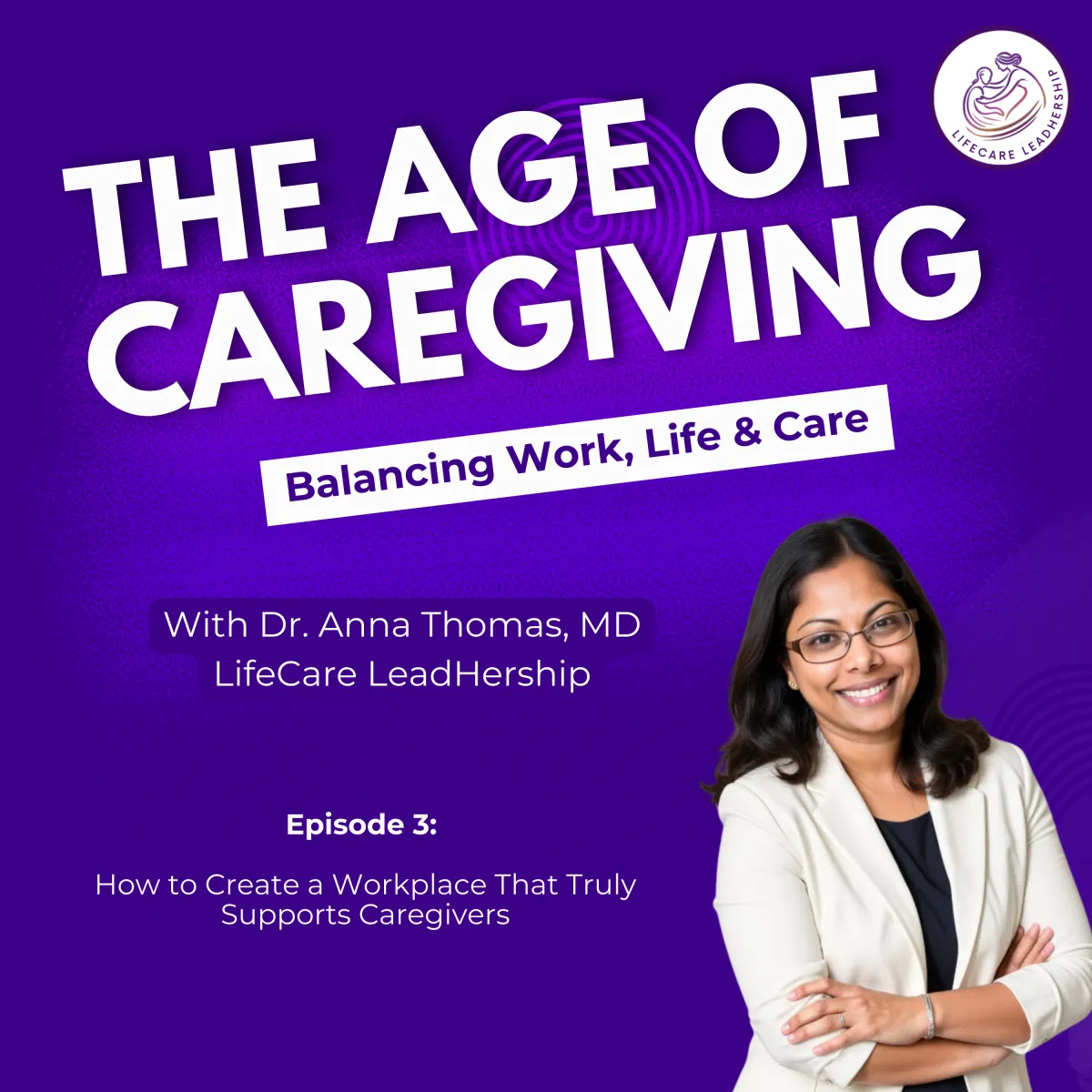
How to Create a Workplace That Truly Supports Caregivers
By Dr. Anna Thomas | Physician, Caregiver Advocate, and Founder of LifeCare LeadHership
How to Create a Workplace That Truly Supports Caregivers
By Dr. Anna Thomas, Founder of LifeCare LeadHership
If you’re in a leadership role today—whether in HR, management, or the C-suite—you’ve probably noticed it: something is shifting in the workforce.
More employees are asking for flexibility. More are taking intermittent leave. Some are disengaging quietly. Others are leaving unexpectedly.
Dig a little deeper, and you’ll often find a common thread beneath these trends:
“My mom just got out of the hospital.”
“My partner was diagnosed with cancer.”
“I’m helping my dad with dementia.”
“I’m caring for my child with special needs.”
This is the hidden workforce within your workforce: caregivers.
We are living in the Age of Caregiving.
According to a Harvard Business School report, 73% of employees report having some type of current caregiving responsibility. Yet most don’t talk about it. Many don’t even identify as caregivers. They just carry the load—until the weight becomes too much.
When organizations fail to see that weight, the impact is undeniable:
Retention drops
Productivity declines
Engagement fractures
Culture starts to crack
So the question isn’t if caregiving is affecting your team—it’s how you’ll respond.
Enter the CARE Framework™
At LifeCare LeadHership, I teach organizations a strategic leadership model called the CARE Framework. It’s designed to help you support caregiver employees without sacrificing business performance.
Let’s break it down:
C is for Culture
Do your employees feel safe talking about caregiving?
If these conversations only happen in whispers—or only come up during crisis—your culture has a gap.
You can start shaping a caregiver-inclusive culture by:
Adding caregiving questions to wellness surveys
Encouraging leaders to share their own caregiving stories
Integrating caregiving into ERGs and DEI efforts
This doesn’t require a budget. Just intentional leadership.
A is for Awareness
You can’t support what you don’t see.
Awareness starts with language. Do employees know they’re caregivers? Have your managers been trained to recognize the signs?
Simple tools like an Organizational Caregiver Culture Assessment (OCCA) can open the door.
Once caregiving is visible, it becomes actionable.
R is for Resources
Many companies already have caregiver-supportive benefits—but they’re underused or hard to find.
Create a centralized Caregiver Resource Hub (even just one internal webpage) that clearly outlines:
Leave and flexibility policies
Internal points of contact
External support organizations
A message that says: We see you. You’re not alone.
This clarity makes all the difference.
E is for Empowerment
Support is good. Empowerment is transformational.
When you give caregivers tools to lead both at home and at work, you unlock resilience, creativity, and long-term loyalty.
This could look like:
Peer mentorship or caregiver ERGs
Leadership training through a From Caregiver to Care Leader workshop
Coaching programs that integrate caregiving into leadership development
Because here’s the truth: caregivers aren’t a liability. They’re your untapped leadership pipeline.
Ready to Take Action?
If you’re not sure where to start, begin with these:
✅ Organizational Caregiver Culture Assessment (OCCA) – Get a clear snapshot of how caregiving shows up in your workplace and where the biggest gaps are. Learn more here: Solutions for Organizations
✅ Why Leaders Must CARE™ Workshop – A practical session for HR and leadership teams to implement the CARE Framework organization-wide. Learn more here: Solutions for Organizations
✅ Read: Balancing Care While Working – A resource-packed guidebook for employees who are caregivers, written specifically for today’s professionals: Balancing Care While Working
You can find all of these at LifeCareLeadHership.com.
🎧 Listen to the Podcast
📺 Watch on YouTube
🌐 Visit: LifeCareLeadHership.com
Bottom line?
You don’t have to fix caregiving for your employees.
You just need to stop pretending it’s not part of the picture.
When your culture reflects CARE—Culture, Awareness, Resources, Empowerment—you give your people permission to lead their whole lives, not just their job titles.
And that’s where the future of leadership begins.
Disclaimer: The views and opinions expressed in this post are solely my own and do not reflect the views of any past or present employer of Dr. Thomas. This content is for educational and informational purposes only and is not intended as medical or legal advice.
